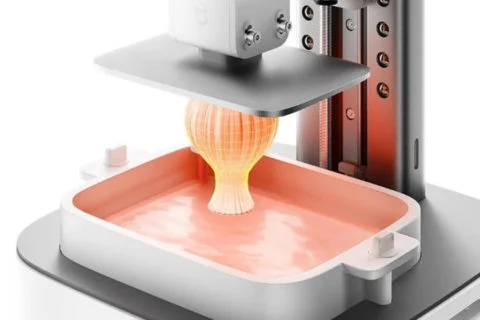Xiaomi 3D Printing Revolution.
The 3D printing industry has yet to crown its champion. From major chemical corporations to budding startups, various entities are vying for the title. And now, a formidable contender has emerged.
Xiaomi’s Exciting Entry into the 3D Printing World
Chinese electronics manufacturer Xiaomi has entered the 3D printing industry with the Mijia 3D printer. Not only is the LCD-based digital light processing (DLP) system unique, in that it combines printing and curing capabilities within a single device, but it’s also cheap. Xiaomi’s move into additive manufacturing (AM) may represent a new era of disruption to low-cost 3D printing.
Mijia 3D Printer: Price and Features
The Mijia has a retail price of 1999 yuan ($279), but can be bought at a special crowdfunding price of 1699 yuan ($237) on the company’s own crowdfunding platform, Xiaomi Youpin. The product is slated for availability in China starting August 10 and is designed to be compatible with an accompanying Mijia app, allowing for remote control and monitoring of the printing process.
The Mijia 3D Printer stands out due to its dual-function design that incorporates printing and curing within the same device. Parts are first printed using the system’s custom LCD screen and then cured with the same light engine once the print has been cured. With a petite build volume of 118 x 65 x 160 mm (4.65 x 2.56 x 6.30 in), the printer is also unique in that it includes automatic resin loading and recovery, not even available with higher end DLP machines. Other features include automatically generated printing parameters, adjusted to the design the CAD file, as well as a built-in library of printable models.

History of Disruptions in the Desktop 3D Printing Market
The desktop 3D printing market has already been disrupted multiple times since the open-source revolution of the last decade. First, pioneers like Formlabs lowered the price of vat photopolymerization to the sub-$5,000 level. Then, a series of Chinese firms were able to drop this cost to below $500 and even $200.
More recently, the polymer extrusion segment has been shaken enormously by the introduction of the Bambu Lab printers, which are incredibly fast while also very reliable. This occurred under the guidance of ex-DJI employees, who had already conquered the consumer drone market. Bambu Lab triggered a number of other brands to follow suit such that the desktop market may never be able to return to the slower, finickier material extrusion machines of the past.
Xiaomi’s Potential Dominance in the Tech Space
When it comes to the world’s largest smartphone manufacturers, Xiaomi Corporation is second only to Huawei, taking in over $40 billion annually. In other words, it has the heft to single-handedly conquer nearly any tech space it enters. Given what Bambu is doing to material extrusion, now would be an ideal time for a company like Xiaomi to do the same for DLP printers. By incorporating features like built-in curing and automatic material loading and recovery, it may be able to do so. That is, if the printer can deliver on speed, user-friendliness, and reliability.

Future Implications for the 3D Printing Industry
However, Xiaomi’s venture into this domain isn’t without challenges. The real test lies in the printer’s ability to fulfill expectations regarding speed, user-interface, and reliability. Despite the uncertainties, Xiaomi’s bold move is undeniably significant. It demonstrates the company’s willingness to explore, even when faced with numerous smaller competitors.
Whether this venture translates to long-term success or remains a brief experiment, Xiaomi’s entry underscores a pivotal moment in the 3D printing sector.
More Information : Xiaomi (Link), Other press release (Link)


